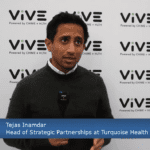The following is a guest article by Rob Mesirow, Partner and Connected Solutions/IoT Leader at PwC.

Though the Internet of Things (IoT) is proving its value in many industries, perhaps the most significant benefits to consumers can be found in healthcare. Here’s a prime example: Health organizations can deploy IoT to remotely monitor patients’ blood pressure, glucose and other devices and collect their data while they’re at home, enabling medical professionals to continuously track patients and identify those who need assistance. When used with analytics software, this technology can also be used to ensure that patients are taking their medicine on schedule and are complying with their doctor’s instructions.
Being able to gain essential insights like these by monitoring patients remotely is attracting a lot of interest from healthcare organizations. In fact, 35% have already begun using IoT for this purpose, and 47% plan to do so within the next two years, according to PwC’s “2019 IoT Survey: Speed operations, strengthen relationships and drive what’s next.”
Though gaining insights into patients’ care and well-being is obviously a meaningful benefit, it’s not the only value IoT provides to healthcare organizations. The top five benefits, according to the IoT survey, are improving the customer experience, security, the supply chain, decision-making, and employee safety.
Safeguarding patients and their data
It’s not surprising that improving security is a top IoT benefit in the healthcare industry, as patient and staff safety and privacy are vital to ensuring trust in these organizations, as well as in IoT technology. Like other sectors in the survey, health organizations understand how essential trusted technology is in today’s digital world: Trust issues related to security and privacy are a prime concern among the health industry executives surveyed, and 38% cited it as a major challenge when deploying their IoT systems. In fact, trust challenges were outranked only by technology architecture and integration issues.
Despite these trust concerns, a little more than half of the respondents to the health industry survey said they are not letting these challenges stop or slow down their IoT projects. Instead, many of them are taking charge and dealing proactively with these challenges: 56% are taking steps to ensure data integrity, 54% are working on cybersecurity issues, and 47% are actively tackling consumer or employee privacy.
IoT technology can even help improve security in healthcare organizations. In hospitals, for example, medical professionals can track the identity and location of patients who are wearing wristbands with IoT sensors, providing secure identification of individuals — which is essential before surgery. These IoT trackers also can ensure that patients receive the right medication at the right time, which is another important safety precaution.
In addition to improving security for patients, this technology can also improve the safety of healthcare employees. For example, IoT-based rapid-response buttons (sometimes called panic buttons) enable medical staff members to immediately request help when they need it. And facial recognition tech can improve security by validating which staff members, patients and visitors can have access to certain areas of a medical facility, such as a maternity ward or intensive care unit (ICU).
IoT can also improve trust within a supply chain. When combined with artificial intelligence (AI) and blockchain, IoT tags can be placed on medical devices to ensure that healthcare organizations get accurate information on the whereabouts, provenance, and other essential attributes of these devices. The data on these device tags can be stored in the healthcare organization’s blockchain to create a secure, unchangeable record.
Improving privacy policies and practices
To improve privacy, 43% of healthcare organizations are improving their policies, and 45% are implementing best practices across their operations. Specific actions being taken include implementing a data privacy policy, enhancing security to prevent breaches of personal data, implementing privacy awareness programs, and designing privacy and security into IoT products.
Despite ongoing privacy and security concerns, the healthcare executives in the survey are optimistic about IoT’s future in their industry, and 65% are putting their money where their mouth is by increasing their investment. Ninety percent of these executives think IoT’s benefits outweigh any potential risks, and 79% believe this technology will help them increase their revenue or profits.
Even more important than providing economic benefits, as we move into an even more connected decade, IoT will help medical professionals significantly improve the healthcare of consumers.
About Rob Mesirow
Rob Mesirow, leader of the PwC Connected Solutions/IoT practice, is a partner in the Technology, Media, and Telecom (TMT) Risk and Regulatory practice. Based in Washington, D.C., he helps clients plan and execute their mobile and business strategies, and advises them about regulatory and market complexity and operational and financial risks.













